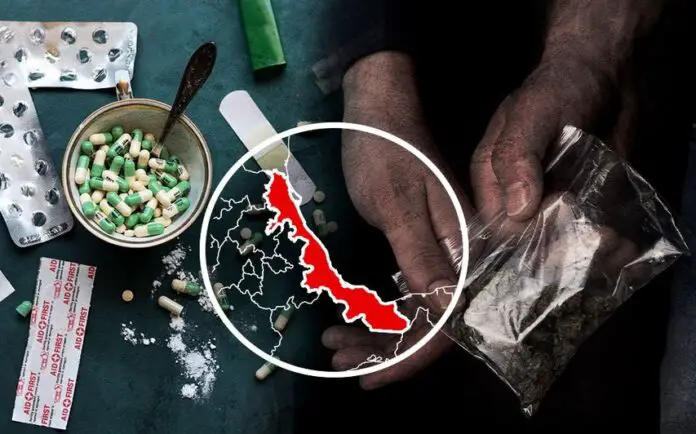So far in 2024, Veracruz has registered 1,977 reports of drug dealing between January and September. The proliferation of criminal groups in various regions of Veracruz has caused an excessive increase in drug dealing over the last six years. Since 2018, the sale of drugs in small quantities has increased by 658 percent in the state.
Figures from the Executive Secretariat of the National Public Security System (SESNSP) show that when Cuitláhuac García assumed the state governorship in 2018, there were 351 complaints for the sale of drugs in public places. This figure shot up to a historical high of 2,662 cases in 2023. The trend has not stopped. So far in 2024, Veracruz has registered 1,977 reports of drug dealing between January and September, reaching a daily average of seven reports, the same alarming level as the previous year, even with one quarter of the year remaining.
This exponential increase shows the consolidation of drug dealing in the state, driven by the activity of criminal groups that have taken advantage of weaknesses in the local security system to expand their operations and take root in various communities in Veracruz.
In October 2022, the then Secretary of Public Security, Hugo Gutiérrez Maldonado, resigned amid allegations of illegal acts by agents of the Secretariat of Public Security. After his resignation, Cuauhtémoc Zúñiga Bonilla assumed office.
According to the National Observatory for the Prevention of Recruitment of Girls, Boys, and Adolescents by Organized Crime, of the Secretariat of Security and Citizen Protection, drug dealing is one of the activities in which minors recruited by crime are most employed in cities with a high flow of people and money.
Almost half of the drug dealing complaints in Veracruz are concentrated in seven municipalities, with the most striking cases being Xalapa with 295 investigations, Coatzacoalcos with 165, the capital Veracruz with 162, and Córdoba with 149 cases, according to data from the SESNSP for the first nine months of 2024.
The problem of drug dealing has also spread throughout the state. In 2018, only 15 percent of the 214 municipalities in the state registered at least one complaint for drug sales on the streets. However, in 2024, the figure grew to 60 percent of the municipalities.
According to official data, in 2018, 351 cases of drug dealing were registered in the state, with a daily average of approximately 0.96 cases. This was the starting point of an upward curve: in 2019, the number of incidents increased to 495, representing a growth of 41 percent. For that year, the daily average reached 1.36 cases, already marking an alarming trend.
The situation worsened in 2020 and 2021, when drug dealing crimes rose to 644 and 977, respectively. In just two years, the daily average went from 1.75 in 2020 to 2.67 in 2021, practically tripling the initial figure for 2018.
Another example of the proliferation of criminal groups in the state is the significant and steady increase in extortion since 2018. The average number of cases reported this year is a record for the state. In 2018, 578 extortions were recorded, while in 2023, the figure rose to 881, representing an increase of 52.4 percent in six years. This growth reflects an intensification of extortion activities in the state, with daily averages also showing an increase, indicating the constant presence of this crime and its impact on Veracruz communities.
In 2024, Veracruz faces the highest daily average of extortion cases ever recorded, a clear indication that the criminal economy has deepened its roots in the state. The daily average of extortions in 2024 —2.63 cases— projects a persistent crisis that gives no respite. Veracruz, immersed in a cycle of violence that has intensified in recent years, faces a reality where crime has overcome institutional defenses and expands its territory every day.
In addition, in recent weeks, there have been various attacks and shootings in the state, resulting in 50 fatalities. The days of October 7 and 15 were the most violent, with six and five fatalities, respectively.
Source: Milenio






